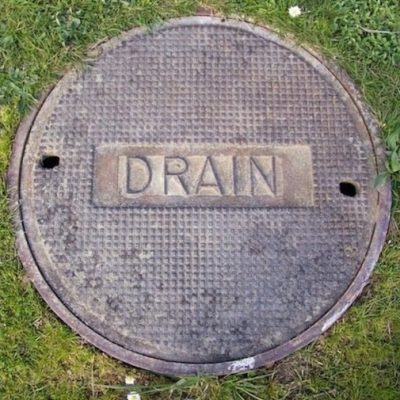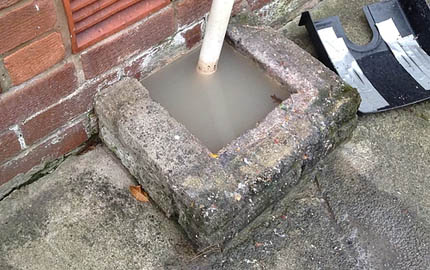Approaches for Fixing a Blocked Drain Before Calling Plumbing Professionals
Approaches for Fixing a Blocked Drain Before Calling Plumbing Professionals
Blog Article
We've found this great article pertaining to Tips for Dealing with Clogged Drains and Sewer Lines down the page on the internet and think it made perfect sense to quickly share it with you over here.

Introduction
Dealing with a blocked drainpipe can be an irritating experience, disrupting day-to-day tasks and possibly triggering damage to your residential property. Nonetheless, prior to connecting to pipes specialists, there are steps you can require to deal with the concern yourself. In this guide, we'll discover DIY solutions and safety nets to deal with an obstructed drain effectively.
Recognizing the Issue
The initial step in addressing an obstructed drainpipe is acknowledging the indicators. Sluggish water drainage, gurgling noises, foul odors emanating from drains, or water support up prevail indications of an obstructed drainpipe. Recognizing these indicators early can help protect against even more issues.
Choosing the Right Pipes Solution
When choosing a plumbing solution, take into consideration factors such as experience, licensing, and customer reviews. Choose a trusted plumbing technician with a record of quality craftsmanship and clear pricing practices.
Expense Factors to consider
The cost of specialist drain cleaning company can differ depending on the intensity of the clog and the plumbing professional's prices. Demand quotes from several providers and ask about any type of surcharges to ensure openness and avoid surprises.
Security Precautions
When attempting DIY drain cleansing, prioritize security. Put on safety gloves and eyewear to stay clear of contact with unsafe chemicals or germs. Never mix various drain cleaning products, as this can generate unsafe fumes.
Case Researches
Real-life instances show the effectiveness of do it yourself options and the significance of timely expert intervention in settling drain clogs.
Usual Reasons For Blocked Drainpipes
Recognizing the factors that contribute to drain clogs is important for reliable resolution. Common offenders include hair, soap residue, oil, food debris, and international things like sanitary products or paper towels. Tree roots getting into below ground pipes can also cause significant obstructions.
DIY Solutions
For small obstructions, several DIY remedies can be effective. Putting boiling thin down the drainpipe can help liquify oil and particles. Baking soda and vinegar or a mixture of salt and cooking soft drink can act as all-natural cleaners. Making use of a bettor or pipes serpent to displace obstructions is one more option.
Tools and Equipment
Having the right devices on hand can make do it yourself drainpipe cleaning a lot more reliable. A plunger is a flexible tool for getting rid of obstructions in sinks, bathrooms, and showers. A pipes serpent or auger can reach deeper blockages, while drain cleansing chemicals can be used carefully for stubborn blockages.
Safety nets
To avoid future clogs, embracing safety nets is essential. Mount drainpipe guards or strainers to capture hair and debris before they go into the pipes. On a regular basis flush drains pipes with hot water to dissolve oil build-up, and stay clear of throwing away grease or solid waste away.
When to Call an Expert
While do it yourself options can solve minor obstructions, specific signs indicate the requirement for specialist assistance. Consistent blockages, foul odors in spite of cleaning efforts, or numerous drains backing up all at once are warnings that warrant expert intervention.
Conclusion
By adhering to the ideas laid out in this guide, you can effectively deal with obstructed drains pipes and avoid future plumbing problems. Whether opting for DIY remedies or looking for expert support, timely action is essential to keeping a healthy pipes system and protecting the integrity of your home.
How to Clear a Clogged Drain Yourself (And When to Call In the Professionals)
What Can Clog a Drain
Dirt Skin flakes Hair Grease Soap scum Food Offset pipes Tree roots Small objects Mineral buildup DIY Tricks to Unclog a Drain
You can fix this! Once you have identified the source of the clog (or have a vague idea), you can try one or a combination of these fixes in order to clear your plumbing.
Wire Hanger or Snake
Untangle and clear out hair from a drainpipe with a homemade snake. Use a straightened-out wire hanger with a 90-degree angle hook to locate the clog and drag out any unwanted material.
Remember not to push the clog further down to where the wire hanger cannot reach! If you need to follow up with a plunger, give it a try. Your efforts might be more successful after it’s been wire-snaked.
If you want to get fancy and don’t have a wire hanger to spare, head to the store and pick up a hand-operated drain snake. You can get one for $10-$30. It may save you the hassle, and provide additional length to reach deep into the clogged pipe.
Plunger
A cup plunger has a suction cup attached to a wooden handle. The rubber creates a seal around the drain, and increases the pressure force of the plunger.
Plunge for 30-second increments to loosen the clog. This may need to be repeated over the course of 15-20 minutes. Once plunged, run the water to flush the remaining material out of the drain.
Remember– never use a plunger if you have used a chemical drain cleaner. These chemicals can splash up from the force of the plunger and cause serious injury or burns.
Boiling Water
Hot water can sometimes break up materials into a flushable amount. Dirt, grease, and soap buildup requires heat in order to unstick from surfaces.
Take your kitchen kettle and heat your water to a boil. Once it reaches a rolling boil, pour it directly down the drain into the blockage. Carefully follow with plunging, if necessary.
Don’t worry if this takes more than one try! It can often take multiple kettles and repeated plunging in order to clear a particularly stubborn clog.
Chemical Drain Cleaner
As a last resort, pick up a bottle of chemical drain cleaner. Drain-cleaning chemicals are potent, and not very good for the environment.
You may need to wear protective eyewear in gloves before handling your bottle of chemical drain cleaner. Follow the instructions printed on the bottle, and flush with water as soon as the instructions allow. Do not follow with plunging.
Baking Soda and Vinegar
As a safer alternative to chemical drain cleaner, baking soda and vinegar can create a chemical reaction that clears tough clogs.
Combine one cup of cleaning vinegar with one cup of boiling water, and set aside. Once you have done this, pour half a cup of baking soda down the drain. Give the baking thirty seconds to settle and cover a large portion of the problem drain.
Following the baking soda, pour down your vinegar and hot water solution. Once the vinegar and baking soda combine, the mixture will bubble and fix. Let this reaction fizzle in the drain for about an hour.
After an hour, follow with a kettle’s worth of hot water. The heat and liquid should flush out any remaining material.
When to Call a Plumber
If your DIY attempts haven’t cleared your clog drain, it’s time to call in a professional. It’s not worth losing access to your kitchen sink or high-traffic bathroom. A clog in a vital area can keep you from the things you’d rather be doing, and derail your routine.
Anytime a clog is causing water to spread is a time to call in a plumbing service. What starts out as a little bit of water can quickly grow into serious, expensive water damage.
Additionally, a serious clog can result in burst pipes or serious leaks. Make sure you know when to take it seriously!
https://myguysnow.com/how-to-clear-a-clogged-drain-yourself-and-when-to-call-in-the-professionals/

I stumbled upon that blog posting on What I learned from trying to deal with a clogged drain when looking around the internet. Are you aware of someone else who is inquisitive about the topic? Please feel free to promote it. I treasure your readership.
Schedule Now Report this page